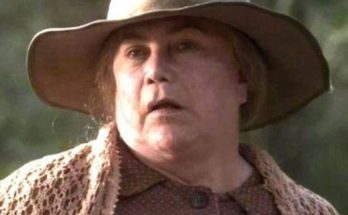When facing the end, it’s time to come clean – at least that’s what happened for numerous individuals who committed some pretty heinous and noteworthy acts. Admissions of murder, theft, and the forging of famous photos are just some of the shocking deathbed confessions that have come down to us through history.
It’s hard to tell if all of these confessions are true, but several of them provided answers to seemingly unanswerable questions, offered resolutions to previously cold cases, or gave families much-needed closure. These last words definitely left an impression.
-
-
An Outlaw Biker Admitted To Slaying A Teenager And Feeding Her Body To Alligators
When 17-year old Amy Billig disappeared on March 4, 1974, the entire community of Coconut Grove, FL, was devastated. Billig reportedly made a trip home after getting out of school, changed clothes, and was seen getting into a van to visit her father’s place of business. She never arrived.
Investigators looked for Billig, but to no avail, and even used her journal as a guide to try to figure out what had happened to the girl. Authorities found her camera by the highway, but there were no real leads as to her whereabouts.
Billig’s mother, Susan, never stopped looking for her daughter and traveled around the world, following potential leads. She wrote a book about her investigation, detailing all of the tips called in and the motorcycle outlaw subculture she was drawn into as she searched for her daughter.
One of the strongest leads Susan possessed was that Billig had been taken by members of the Pagans motorcycle club to party in the Everglades. In 1998, a former “enforcer” for the Pagans, Paul Branch, confessed to the deed, admitting the club had picked Billig up, slipped her something, then taken her to their clubhouse, and repeatedly assaulted her.
Billig’s heart stopped as a result of the substances and abuse, and the gang dropped her body in the swamps of the Everglades to get rid of the evidence, feeding her to the alligators to cover their tracks. According to authorities, Branch and other members of the Pagans had been questioned in Billig’s disappearance, but repeatedly denied any knowledge of the event. Only at the end did Branch admit to his wife that members of the club were responsible.
It’s unclear if Susan Billig ever believed Branch’s confession or if an actual confession ever took place. Authorities were hesitant to believe Branch’s widow, thinking she was trying to capitalize on the passings of Billig and her husband. Susan Billig continued to look for her daughter, indicating she wasn’t satisfied with the widow’s information.
-
Photo: Witzel Studios / Wikimedia Commons / Public Domain
Margaret Gibson Confessed To The Slaying Of Director William Desmond Taylor
Margaret Gibson wasn’t a prime suspect in the death of Hollywood director William Desmond Taylor, but in her final moments, she asked for a priest and confessed to slaying him. Gibson, a former actor, worked with Taylor in 1910. But after he passed, this connection didn’t receive notice. There were several more likely suspects, including Taylor’s friend (and possible lover), Mabel Normand; a young woman in love with Taylor named Mary Miles Minter; and Taylor’s former valet, Edward Sands.
William Desmond Taylor was slain in early February 1922. There were no witnesses, and Normand was the last person known to see him alive. Normand had a substance abuse habit and there were theories that Taylor’s attempts to clean her up may have been a motive.
When police searched his house, they found love notes from Minter, as well as a nightgown, and later discovered she had once tried to end her life with a gun that resembled the one used on Taylor. The investigation into Taylor revealed that Sands had been stealing money from Taylor, and authorities discovered one additional suspect, Minter’s mother, Charlotte Shelby. Shelby was said to be opposed to any relationship that may have been budding between her daughter and Taylor.
There’s no known motive for Gibson having slain Taylor, and the case remains unsolved. When Gibson confessed, she was going by the name Pat Lewis, and during her time in Hollywood, she’d been in trouble with the law. But aside from her confession, there is nothing linking her to the incident.
-
Nili Shamrat Told Police Her Late Husband Confessed He’d Stolen Marie Antoinette’s Pocket Watch
In 2006, an anonymous woman hired a lawyer to negotiate selling some antique clocks and watches that her late husband had collected over the years. Some 40 time pieces were sold to the LA Mayer Museum in Jerusalem, and when asked by investigators later, the women stated her husband confessed to stealing them from that same museum in 1983.
The woman, Nili Shamrat, was the widow of Na’aman Diller, an Israeli thief who was “a repeat offender who specialized in forgery and break-ins… [and] could scale walls and slip through small windows.” He was active in Tel Aviv during the ’60s and ’70s, during which time he met Shamrat. The two had a brief love affair, but she moved to the United States and married someone else.
In the ’80s, the two reunited and were married in 2003, although Shamrat continued to live in the US. They met up regularly in Tel Aviv and Europe. Accounts differ as to how, but before Diller’s passing in 2004, the spoils of his thievery were collected into a box and moved to Europe before Shamrat took possession of them.
One item was a watch made by Abraham-Louis Breguet for Marie Antoinette. The watch took over 40 years to complete and wasn’t finished until 1827, long after Antoinette’s time. In fact, even Breguet had passed, with his son taking over the task and completing it. Breguet was known as the “the watchmaker of the kings, the king of the watchmakers” and his works combined invention, innovation, and luxury into one timepiece. The watch that he constructed for Marie Antoinette was made out of gold and sapphires, and valued at over $30 million when it was recovered.
Diller had been questioned at the time of the robbery, but there was no evidence he’d committed the act. Nili Shamrat was arrested for possession of stolen items, convicted, and sentenced to probation and community service.
-
Christian Spurling Fessed Up To Faking The Loch Ness Monster Photos
Sightings of the Loch Ness monster date all the way back to the sixth century, but the most famous photographic “evidence” of the creature’s existence comes from the 1930s. In 1933, several people claimed to see the Loch Ness monster, which increased interest in the mystery, as well as tourism to the area. The so-called “Surgeon’s Photo,” taken by Colonel Robert Wilson in 1934, captured the head of Nessie as the monster swam through the waters of Loch Ness.
Wilson, a British surgeon, claimed he’d been driving near the Loch and saw something swimming, at which point he stopped to take the picture. He never wanted credit for the image, hence it being called “The Surgeon’s Photo,” and until the 1990s, it was believed by many that he’d captured actual proof of the monster’s existence. This isn’t to say there weren’t skeptics – in 1984, Stewart Campbell assessed the picture and decided that whatever was on the surface of the water couldn’t be more than two or three feet long and must have been some sort of explainable wildlife.
Even Campbell was proven wrong, however, when Christian Spurling confessed, at the end of his life, that he’d perpetrated the hoax and been part of the fake photo’s creation. 90-year-old Spurling passed in 1994. According to Spurling, he was in cahoots with his step-father and Loch Ness monster enthusiast, Marmaduke Wetherell, as well as Wilson, when he sent a toy submarine with an animal head attached to the top out into the Loch. The picture was staged by Spurling and Wetherell, who then handed it off to Wilson to give it credibility as he presented it to the public.
-
James Washington Thought He Was At The End And Confessed To Murder – But He Survived
In 2009, Nashville prison inmate James Washington suffered a heart attack (or a seizure attack, according to some outlets), an experience that prompted him to confess to the slaying of Joyce Goodener in 1995. Washington, in prison for a second degree murder conviction from 2006, thought he was at the end. Either in an attempt to find absolution or as an act of pure desperation, Washington told a prison guard that he ended Goodener, a woman that had been found brutally slain in Nashville, TN, 17 years earlier.
Washington recovered from his ailment and tried to take back his confession, claiming he was hallucinating. He was put on trial, where it came out that Washington had been in a relationship with Goodener. After a three-day trial, Washington was convicted, and sentenced to life in prison without parole.
-
KKK Member Henry Alexander Denied Involvement In Willie Edwards Jr.’s Slaying – Until His Final Moments
In 1957, four Ku Klux Klan members grabbed truck driver Willie Edwards Jr. and forced him to jump off the Tyler-Goodwin Bridge near Montgomery, AL. Edwards, only 25 at the time, had stopped for something to drink on the way back from a delivery when he was forced out of his truck at gunpoint and into their car.
The Ku Klux Klan members claimed Edwards had “offended a white woman” and beat him as they drove to the bridge high above the Alabama River. Once they arrived at their destination, they made Edwards get out of the car and told him to jump or be shot. Edwards jumped 125 feet; he didn’t survive.
One of the four men that took part, Raymond Britt, confessed to the crime in 1976. He was granted immunity in exchange for his testimony against his three companions, Sonny Kyle Livingston, Henry Alexander, and James York. None of the men were ever convicted, however, and the charges against them were thrown out not once, but twice. Alexander, according to his widow, Diane, finally admitted to her that he’d been one of the men who forced Edwards to jump.
According to Diane, her husband not only played a part in the slaying, but was the one who falsely identified him as the man that “offended a white woman,” prompting the action against him. Alexander told his wife “I didn’t think he would jump… if he’d a run, they would never have shot him.” Alexander was remorseful and just before he died said, “I had no business hating the blacks… they’ve never done anything to me.”
-
Ottis Toole Confessed To Slaying A 6-Year-Old Right Before He Passed
Six-year-old Adam Walsh vanished from a Sears department store on July 27, 1981. He was on a shopping trip with his mother, who let her son out of her sights for a few minutes, never to see him again. The search for Walsh led to the discovery of the boy’s head in a canal over 100 miles away from the Hollywood, FL, mall where he disappeared. His body was never discovered.
Walsh’s father, John Walsh, became an advocate for missing children as the host of America’s Most Wanted, and never gave up when it came to finding the person responsible. There were several suspects, one of whom was Ottis Toole. According to the Walshes, however, the investigation was botched. Toole had been partnered with another serial slayer named Henry Lee Lucas, and both men confessed to countless grisly acts over the years.
Toole, in prison for another slaying soon after Adam’s, twice confessed, but recanted both times. Despite this, John Walsh always believed Toole was responsible. It was only in his final moments that Toole told his niece he’d done it.
-
Christopher Smith Lived With His Guilt For Over 20 Years
In 1975, Joan Harrison was raped and fatally beaten in Preston, England. Harrison was the mother of two children, and worked as a sex worker. Her body was found in a garage and the acts was attributed to the Yorkshire Ripper, later identified as Peter Sutcliffe. Sutcliffe was convicted of slaying 13 women between 1976 and 1981. He did not do the same to Harrison, however.
In 2008, convicted sex offender Christopher Smith was arrested for a DUI offense. From that arrest, authorities were able to collect DNA evidence that later matched DNA from Harrison’s body. In the interim, Smith passed from lung cancer – but not before scrawling out a confession of sorts. The note, discovered by police after Smith’s passing, read:
Two how (sic) ever it concerns I would like to put the record straight. I can’t go on with the guilt.
I have lived with it for over 20 years.
I am truly sorry for all the pain I have caused to anyone. Please believe me when I say I am sorry.
I love my grandkids and my daughter. I cannot go back to prison anymore. Please God help my family who I worship. I have been out of trouble for over 20 years so please Gold help me.
I am so sorry. God forgive me. I love you all forever.
After the DNA match was confirmed, police took this note as a confession.
-
Alice Mock Falsely Accused A Black Friend Of Rape, Which Sent Him To Prison For Over A Decade
After Alice Mock accused Wayman Cammile Jr. of rape in 1975, he was sentenced to 15 years in prison for the offense. According to Mock, Cammile also robbed her, but on her deathbed, she admitted that she had invited Cammile into her apartment and actually robbed him once he passed out from drinking.
Before passing, Mock revealed the true story to her neighbor. Mock only made the claim because she didn’t want her landlord to know she had invited a Black man into her apartment. She also didn’t want Cammile to know she had taken money from him. After Mock’s confession, Cammile was released from prison in 1987.
-
James Brewer Confessed To Shooting A Man Who Flirted With His Wife, Only To Live And Go On Trial
As James Brewer lay in bed during what he thought were his final moments, he confessed to slaying his neighbor 32 years earlier. In 1977, Brewer had been living in Tennessee with his wife, Dorothy. In a jealous rage, Brewer shot their neighbor, Jimmy Carroll, believing he was trying to seduce his wife.
Brewer and his wife fled Tennessee after the event, hiding in Oklahoma under assumed names. Brewer, called Michael Anderson in his new life, suffered a stroke in 2009. From his hospital bed, he called the police and confessed to the deed. He wanted to “cleanse his soul” before he passed.
Brewer lived, however, and he and his wife returned to Tennessee to surrender.
-
-
Roy Heath Admitted To Slaying A Man And Led Police To The Body, Buried Under His Patio
From his hospice bed in London, Roy Heath told authorities that he had slain Mohammed Taki, wrapped him in a blanket, and buried him under his patio. Taki, an Iraqi national, was 53, but little is known about what led to his end.
When Heath confessed to the brutal crime in 2010, he told them he’d choked Taki. Heath passed 13 days later, so authorities were unable to follow up with him, although Heath supposedly explained his motive beforehand.
Investigators also discovered that Heath had ties to gangster Reggie Kray and his brother Ronnie. Heath had also been accused of slaying a business associate in 1997, but nothing ever came of the case. Police arrested three additional suspects after Heath’s confession, but no charges were ever filed.
-
Eileen Tessier Confessed To Providing Her Son With An Alibi – But May Have Falsely Accused Him
In 2008, the Illinois State Police received an email from Janet Tessier telling them that her brother was responsible for the oldest cold case in the nation’s history. Tessier had been at her mother’s side 14 years earlier, just before she passed, when the older woman confessed to providing her son, John, with a false alibi for the slaying of 7-year-old Maria Ridulph in 1957.
Maria Ridulph disappeared from Sycamore, IL, in December 1957 and her body was discovered in Galena the following spring. The FBI didn’t have any solid leads until an anonymous phone call brought them to the Tessier household.
When authorities asked Ralph and Eileen Tessier where her son was on the night Ridulph vanished, they claimed he was miles away at a military base. For the other Tessier children – Janet was only an infant at the time, but her older sisters remembered the night vividly – this was problematic because they knew that it wasn’t true.
According to Jeanne Tessier, “I thought she must be protecting him because she had, to my knowledge, lied to protect him before…” John was abusive to all of his family members and seemed to be “unstable,” but his mother covered for him that night.
Eileen Tessier admitted to lying for her son shortly before her passing in 1994. By this time, John had changed his name to Jack McCullough and moved to Seattle, where he worked as a police officer. After his arrest and trial, he was convicted and sentenced to life in prison in 2012. But a collect call Tessier made around the supposed time of the event placed him in another town. In 2017, a judge ruled that Tessier was innocent.
-
Geraldine Kelley Told Her Family She Slayed Her Husband And Stored His Body In A Freezer
Geraldine Kelley told everyone that her husband, John, died in a traffic accident after returning to Massachusetts from California, where the rest of the family was living. But in 2004, she admitted that it had all been a lie. Kelley had shot her husband around 14 years earlier, storing his body in a freezer. Kelley, losing a fight with cancer at the age of 54, told her daughter what she had done and that the body was still in that same freezer.
Kelley, who had also moved back east from California, shipped her husband’s remains to Massachusetts during the late 1990s. When authorities visited Kelley’s storage unit where the freezer was stashed, they found an unplugged, locked freezer sealed with duct tape. The remains inside were ultimately determined to be John. Some believe Kelley was a victim of domestic violence, but motive for the incident remains unclear.






